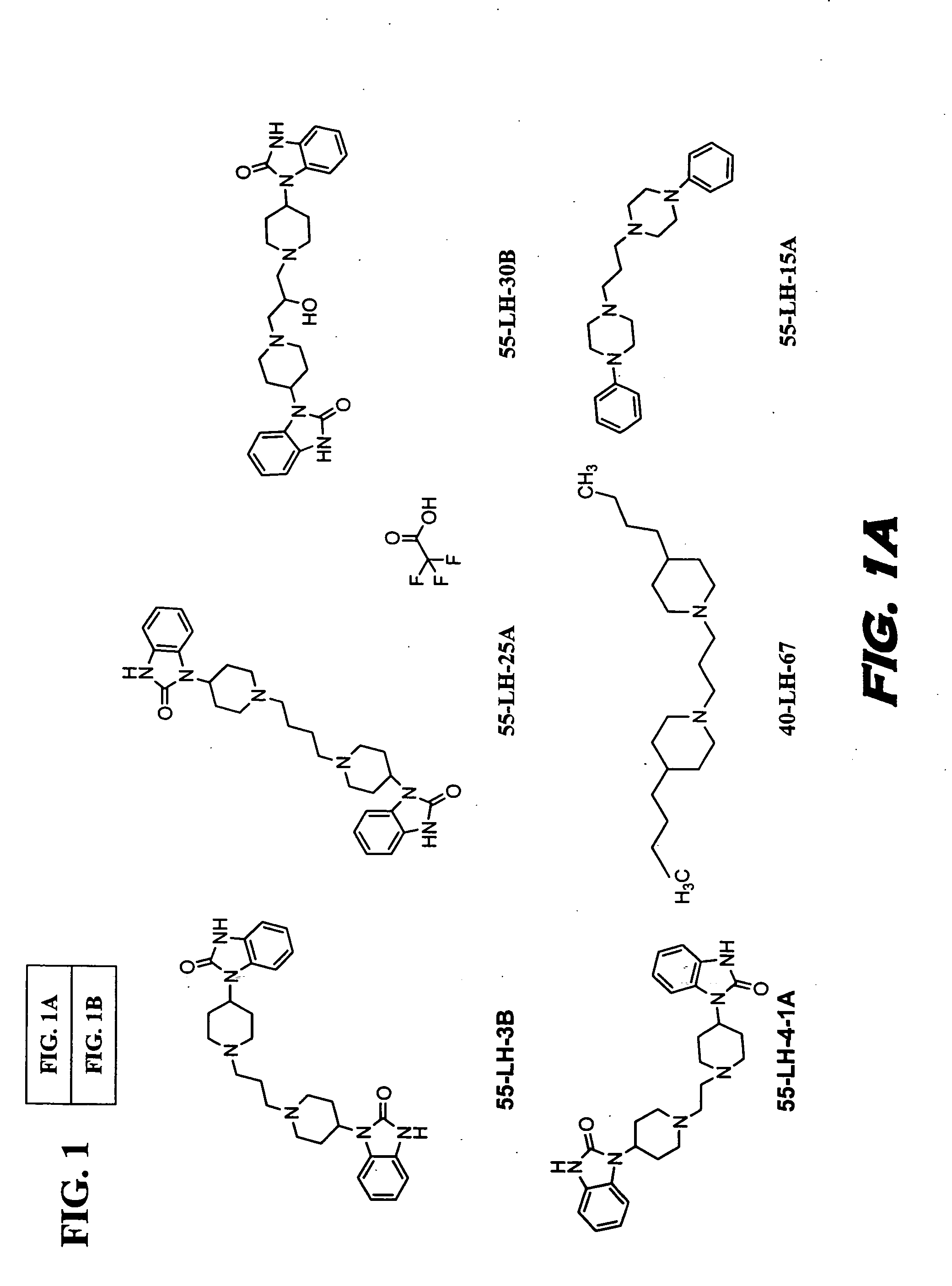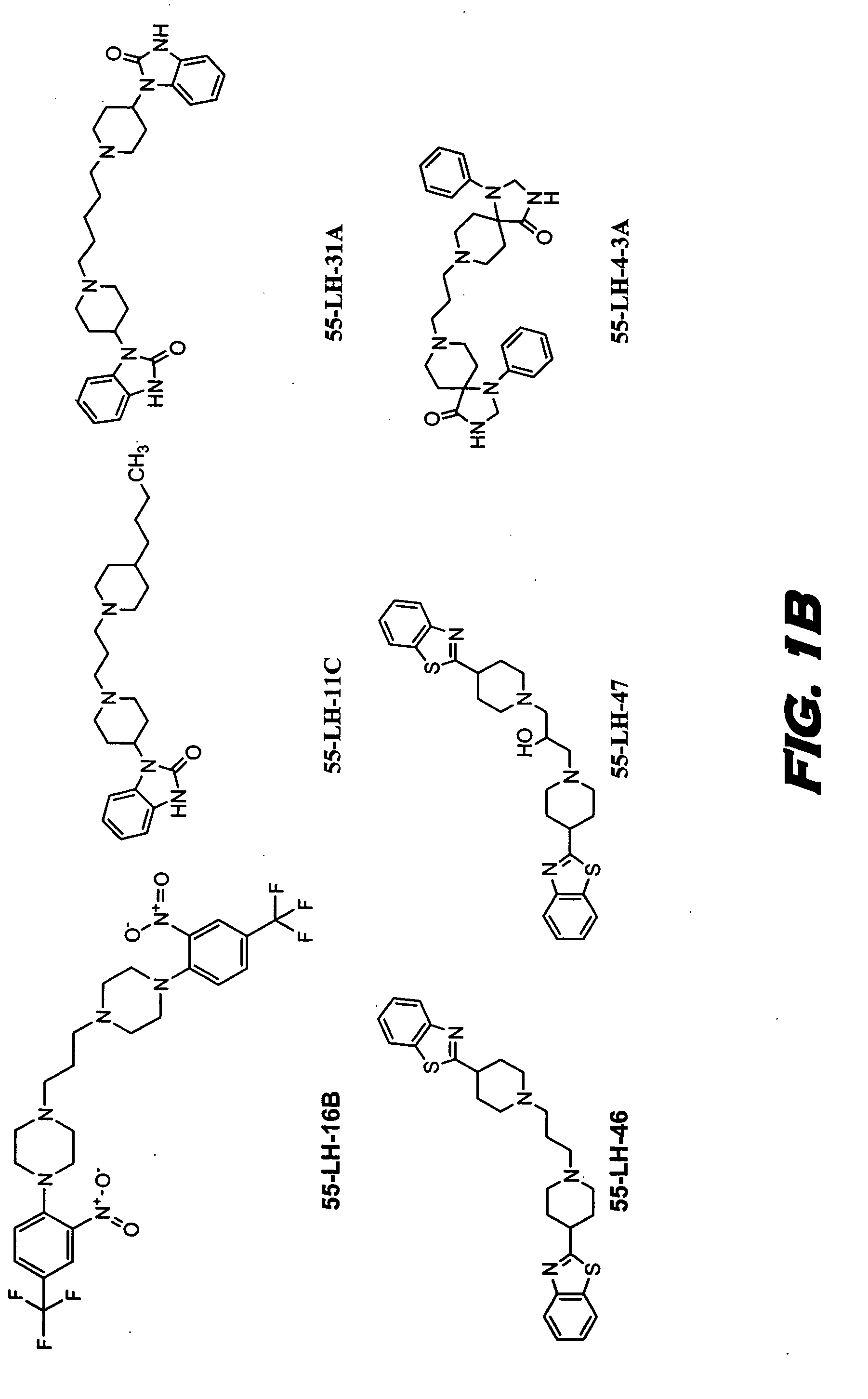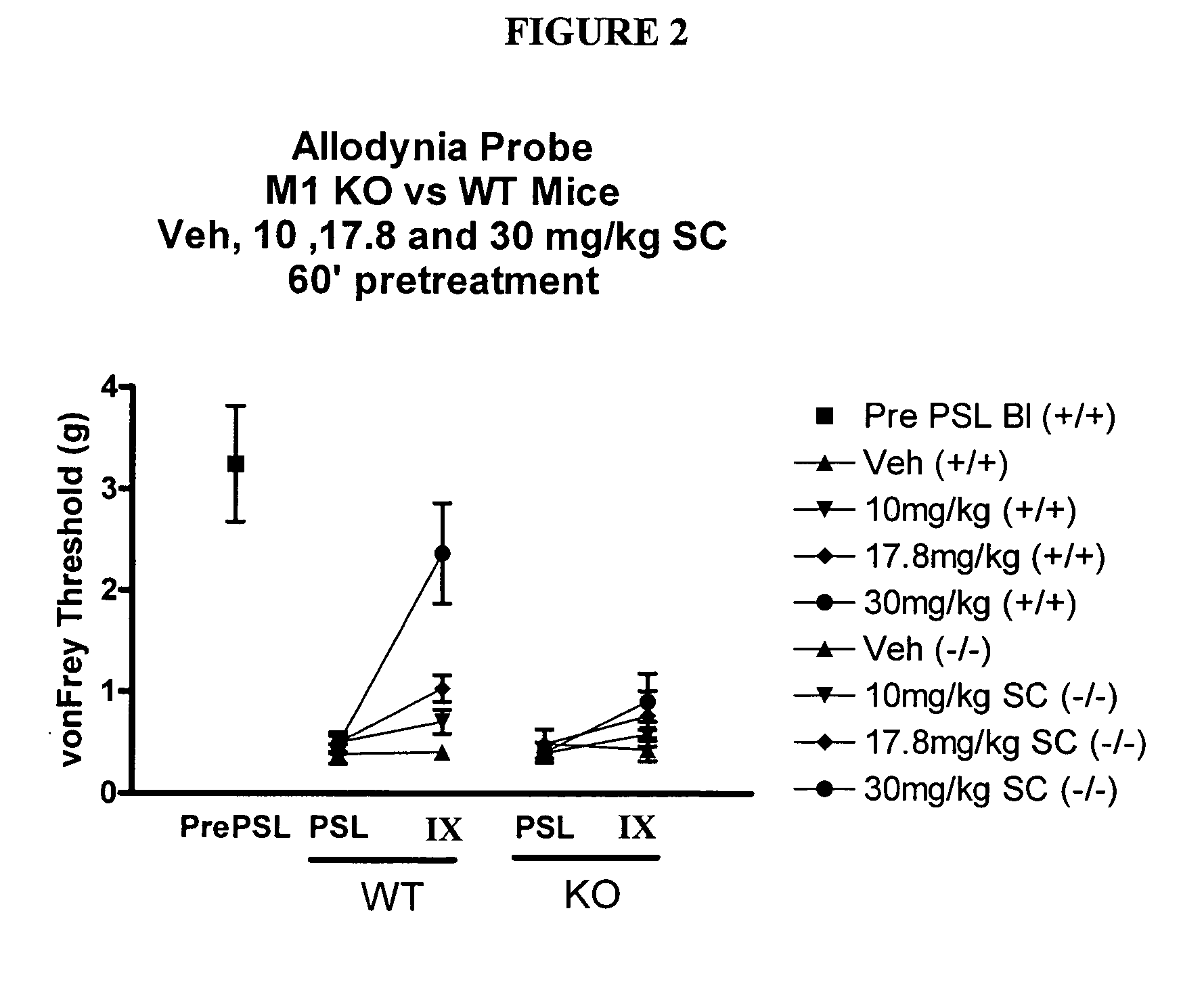Muscarinic M1 receptor agonists for pain management
- Summary
- Abstract
- Description
- Claims
- Application Information
AI Technical Summary
Benefits of technology
Problems solved by technology
Method used
Image
Examples
example 1
[0129] The functional receptor assay, Receptor Selection and Amplification Technology (R-SAT), essentially as disclosed in U.S. Pat. Nos. 5,707,798, 5,912,132, and 5,955,281, which are all hereby incorporated by reference in their entirety, was used to investigate the pharmacological properties of known and novel muscarinic agonists. Accordingly, xanomeline, oxotremorine, milameline, and the compounds of formulas VII, VIII, and IX were tested.
[0130] These experiments have provided a molecular profile, or fingerprint, for each of these agents across the most meaningful receptors, the M(1) and M(2) muscarinic receptor subtypes. As can be seen in Table 1, the three reference agents, xanomeline, oxotremorine and milameline, are potent and efficacious full agonists at both the M(1) and M(2) receptor subtypes. In contrast, the compounds of Formulas VII, VIII, and IX are potent and efficacious M(1) agonist but only weak partial agonists at M(2) receptors.
TABLE 1Comparison of Reference M...
example 2
Muscarinic Side Effects
[0142] All of the reference muscarinic receptor agonists tested produced cholinergic side effects as shown in Table 2. The number of animals exhibiting each side effect at each dose is shown compared to the number of animals tested (N). Xanomeline at a dose of 30 mg / kg produced diarrhea, salivation, and lethargy in all animals tested at this dose, whereas the lower dose of 10 mg / kg only produced diarrhea in 2 of 11 animals tested. Oxotremorine at a dose of 1 mg / kg produced all five of the measured muscarinic side effects in the majority of the rats, where as 0.3 mg / kg produced only diarrhea, salivation and lethargy. Milameline at 1 mg / kg, like oxotremorine, produced four of the measured side effects but not tremors, where as the lower dose of 0.3 mg / kg produced predominately diarrhea. In contrast, none of the compounds of Formulas VII, VII, or IX produced any of these side-effects at doses between 3.0 mg / kg and 30 mg / kg. Thus, the reference muscarinic agonis...
example 3
Partial Sciatic Ligation (PSL) Surgery / Tactile Allodynia
[0143] Male mice (C57B1 / 6) were anesthetized using 1% Isoflurane (1 Lpm) inhalation anesthetic under aseptic and heated conditions. The left quadriceps was shaved and scrubbed thoroughly with an iodine solution. The sciatic notch was palpated and an incision made from the notch to mid quadriceps. The sciatic nerve was exposed at the level of the sciatic notch distally to the sciatic trifurcation. The nerve was carefully freed from the underlying muscle and connective tissue without causing trauma to the nerve itself. When necessary sterile saline was applied to the exposed tissue to prevent it from drying out. Using 10-0 polypropelene blue monofilament suture, the sciatic nerve was perforated immediately distal to the sciatic notch and ligation tied to occlude ⅓ to ½ of the sciatic nerve. Under magnification the ligature was tightened until a slight twitch was observed in the animals left paw. The muscular incision was closed...
PUM
| Property | Measurement | Unit |
|---|---|---|
| Selectivity | aaaaa | aaaaa |
| Thermal properties | aaaaa | aaaaa |
Abstract
Description
Claims
Application Information
 Login to View More
Login to View More - R&D
- Intellectual Property
- Life Sciences
- Materials
- Tech Scout
- Unparalleled Data Quality
- Higher Quality Content
- 60% Fewer Hallucinations
Browse by: Latest US Patents, China's latest patents, Technical Efficacy Thesaurus, Application Domain, Technology Topic, Popular Technical Reports.
© 2025 PatSnap. All rights reserved.Legal|Privacy policy|Modern Slavery Act Transparency Statement|Sitemap|About US| Contact US: help@patsnap.com



